
- Schools & departments


Particle Physics PhD
Awards: PhD
Study modes: Full-time
Funding opportunities
Programme website: Particle Physics
Discovery Day
Join us online on 21st August to learn more about postgraduate study at Edinburgh.
Find out more and register
Research profile
Exploring nature at the tiniest scale, the Particle Physics group seeks to add to our understanding of the make-up of our universe.
By joining our research group, you will be following in the footsteps of our celebrated emeritus professor, Peter Higgs, whose groundbreaking Higgs mechanism has excited the world of physics for decades and has been the focus of operations at the Large Hadron Collider at CERN.
You will also have the opportunity to confer and work with some of the greatest minds in physics today, through our links with leading conferences and international facilities.
Our research group works in two areas: Theory and Experiment.
Particle Physics – Theory
This research concerns fundamental physics at all energy scales, from hadronic binding energy to the massive forces at play in the first instants of the universe’s existence.
We collaborate with leading facilities, such as the Large Hadron Collider at CERN and the WMAP and Planck satellites.
Our current research explores developments in both perturbative and non-perturbative field theory, renormalization theory and the application of quantum theory to other branches of physics, such as turbulence theory and condensed matter systems.
Particle Physics – Experiment
We look to understand the fundamental particles of nature and the interactions that govern their behaviour.
In particular, from understanding the symmetries present in the universe, we seek to explain the dominance of matter over anti-matter, and mechanisms of symmetry-breaking that led to the creation of mass via the Higgs boson and non-Standard Model particles.
Researchers from our group are working on two experiments at the Large Hadron Collider, the LHCb experiment and the ATLAS experiment.
Training and support
In addition to research, our students attend a wide range of lectures and participate in international conferences.
Studentship opportunities
The Particle Physics group offers prospective PhD students exciting opportunities to study at the very frontier of understanding. Fully funded studentships are available for a wide range of theoretical and experimental projects, plus opportunities to travel to CERN for long and short visits.
Entry requirements
These entry requirements are for the 2024/25 academic year and requirements for future academic years may differ. Entry requirements for the 2025/26 academic year will be published on 1 Oct 2024.
A UK 2:1 honours degree, or its international equivalent, in physics.
International qualifications
Check whether your international qualifications meet our general entry requirements:
- Entry requirements by country
- English language requirements
Regardless of your nationality or country of residence, you must demonstrate a level of English language competency at a level that will enable you to succeed in your studies.
English language tests
We accept the following English language qualifications at the grades specified:
- IELTS Academic: total 6.5 with at least 6.0 in each component. We do not accept IELTS One Skill Retake to meet our English language requirements.
- TOEFL-iBT (including Home Edition): total 92 with at least 20 in each component. We do not accept TOEFL MyBest Score to meet our English language requirements.
- C1 Advanced ( CAE ) / C2 Proficiency ( CPE ): total 176 with at least 169 in each component.
- Trinity ISE : ISE II with distinctions in all four components.
- PTE Academic: total 62 with at least 59 in each component.
Your English language qualification must be no more than three and a half years old from the start date of the programme you are applying to study, unless you are using IELTS , TOEFL, Trinity ISE or PTE , in which case it must be no more than two years old.
Degrees taught and assessed in English
We also accept an undergraduate or postgraduate degree that has been taught and assessed in English in a majority English speaking country, as defined by UK Visas and Immigration:
- UKVI list of majority English speaking countries
We also accept a degree that has been taught and assessed in English from a university on our list of approved universities in non-majority English speaking countries (non-MESC).
- Approved universities in non-MESC
If you are not a national of a majority English speaking country, then your degree must be no more than five years old* at the beginning of your programme of study. (*Revised 05 March 2024 to extend degree validity to five years.)
Find out more about our language requirements:
- Academic Technology Approval Scheme
If you are not an EU , EEA or Swiss national, you may need an Academic Technology Approval Scheme clearance certificate in order to study this programme.
Fees and costs
Tuition fees.
| Award | Title | Duration | Study mode | |
|---|---|---|---|---|
| PhD | Physics | 3 Years | Full-time |
Scholarships and funding
Featured funding.
- Research Council Studentships
- Research scholarships for international students
UK government postgraduate loans
If you live in the UK, you may be able to apply for a postgraduate loan from one of the UK's governments.
The type and amount of financial support you are eligible for will depend on:
- your programme
- the duration of your studies
- your tuition fee status
Programmes studied on a part-time intermittent basis are not eligible.
- UK government and other external funding
Other funding opportunities
Search for scholarships and funding opportunities:
- Search for funding
Further information
- Graduate School Administrator
- Phone: +44 (0)131 650 5812
- Contact: [email protected]
- School of Physics & Astronomy
- James Clerk Maxwell Building
- Peter Guthrie Tait Road
- The King's Buildings Campus
- Programme: Particle Physics
- School: Physics & Astronomy
- College: Science & Engineering
Select your programme and preferred start date to begin your application.
PhD Physics - 3 Years (Full-time)
Application deadlines.
We encourage you to apply at least one month prior to entry so that we have enough time to process your application. If you are also applying for funding or will require a visa then we strongly recommend you apply as early as possible.
- How to apply
You must submit two references with your application.
Find out more about the general application process for postgraduate programmes:
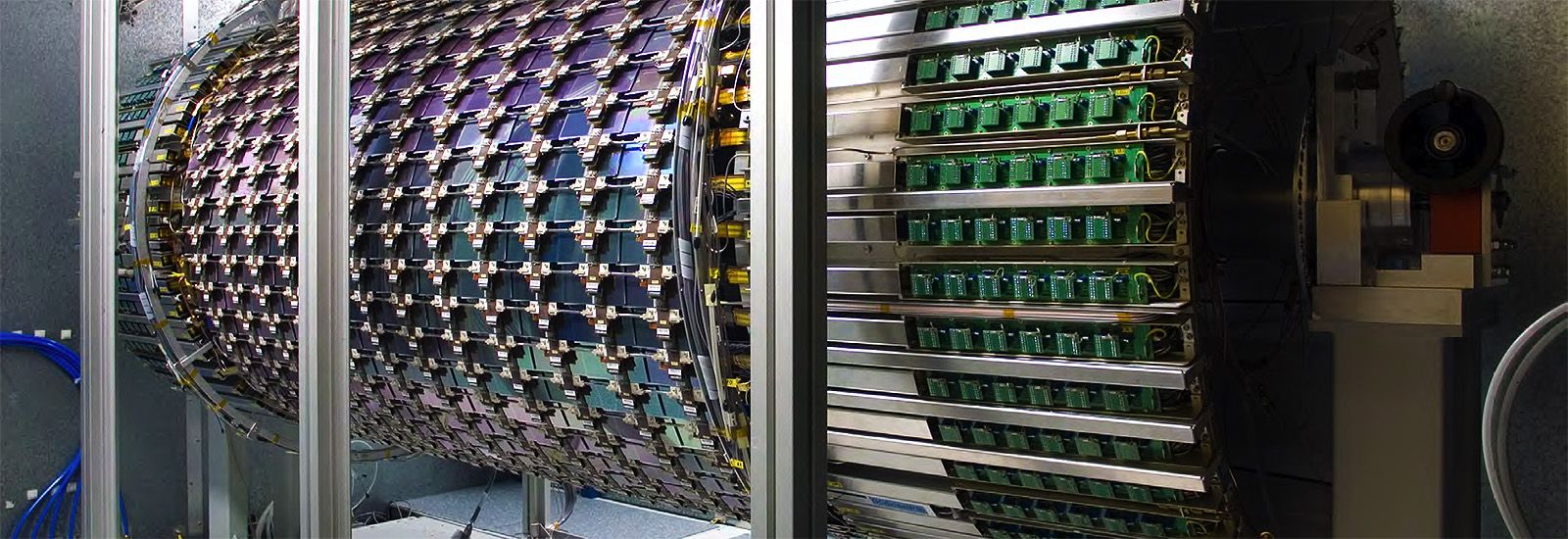
DPhil in Particle Physics
- Entry requirements
- Funding and Costs
College preference
- How to Apply
About the course
The work of this world-class sub-department is in experimental particle physics, particle astrophysics and accelerator physics. Particle physics is the study of basic constituents of matter and their interactions. This is accomplished either directly with accelerators that create the particles under study or by observing high-energy particles from outer space.
The sub-department is one of the largest in the UK and is well equipped to carry out research in a wide range of topics, from the study of new particles produced at high energy accelerators to neutrinos, dark matter and dark energy in the Universe. The sub-department’s experiments are carried out at facilities around the world, in Switzerland, Japan, the USA and Canada.
You will spend half the first year on a lecture course in addition to starting your research and, if appropriate, spend your second year on-site at your experiment. Laboratories here in Oxford and experiments at overseas facilities provide access to a high-tech environment and excellent research training, directly applicable to a broad range of fields.
The world's biggest accelerator, the Large Hadron Collider (LHC) at CERN, is running and in 2012 the Higgs boson, a particle thought to give mass to all elementary particles, was discovered. The understanding of its properties is one of the main aims of the ATLAS experiment. The Oxford group is also focused on the search of new particles predicted in Supersymmetry and others beyond the Standard Model theories. Elucidation of CP violation, one of the mysteries of particle physics, is the aim of the sub-department’s other LHC experiment, LHCb. Both experiments will require you to obtain and analyse data from the highest-energy machine in the world.
The sub-department is also involved in the study of neutrino oscillations and neutrino properties at the T2K experiment in Japan, MicroBooNe & DUNE in the USA, and at the Sudbury Neutrino Observatory (SNO+) in Canada.
The sub-department has participated in direct searches for dark matter for many years and studentships are now available associated to the LZ project. Recently it has begun a programme in collaboration with the sub-department of astrophysics to elucidate the nature of dark energy with the Legacy Survey of Space and Time (LSST) of the Vera C Rubin Observatory.
The future of particle physics relies on the development of new instruments for detecting particles and novel ideas in accelerator physics. The sub-department is heavily involved in the development of these areas. It has outstanding facilities to build the new silicon detectors needed for the luminosity upgrade of the LHC and other applications.
The sub-department is playing a major role in the ProtoDune experimental program at CERN, which is designed to test and validate the Liquid Argon Time Projection Chamber technologies for the construction of the DUNE Far Detector at the Sanford Underground Research Facility (SURF).
Furthermore, through the John Adams Institute, students can engage in a range of projects on accelerators which would be used in high energy physics, nuclear physics, as X-ray sources, and in medical applications.
Supervision
The allocation of graduate supervision for this course is the responsibility of the Department of Physics and it is not always possible to accommodate the preferences of incoming graduate students to work with a particular member of staff. Under exceptional circumstances a supervisor may be found outside the Department of Physics.
You will be allocated at least one supervisor who should be your primary contact for guidance throughout your research degree. Research students join an existing research group which typically consists of academics, postdocs, fellows and current students. Students will meet with supervisors regularly. This could be in person, via email, or video conferencing.
All students will be initially admitted to the status of Probationer Research Student (PRS). Within a maximum of six terms as a PRS student and normally by the fourth term you will be expected to apply for transfer of status from Probationer Research Student to DPhil status.
A successful transfer of status from PRS to DPhil status will require satisfactory attendance and completion of problem sets during your first two terms, and submission of a report and thesis outline. Submission on a report and thesis outline. Students who are successful at transfer will also be expected to apply for and gain confirmation of DPhil status within nine terms of admission, to show that your work continues to be on track.
Both milestones normally involve an interview with two or more assessors other than your supervisor and therefore provide important experience for the final oral examination (ie the viva).
The actual DPhil viva requires you to submit a [substantial and original] thesis not exceeding 250 pages after three or at most four years from the date of admission. To be successfully awarded a DPhil in particle physics you will need to defend your thesis orally (viva voce) in front of two appointed examiners.
Graduate destinations
The particle physics doctoral programme at Oxford is ideally suited to students who would like to pursue a career in research, either in academia or industry all over the world.
Students have taken on a wide variety of jobs in other fields, including investment banking, business analysis, and consulting. Physics as a discipline is always in high demand.
Changes to this course and your supervision
The University will seek to deliver this course in accordance with the description set out in this course page. However, there may be situations in which it is desirable or necessary for the University to make changes in course provision, either before or after registration. The safety of students, staff and visitors is paramount and major changes to delivery or services may have to be made in circumstances of a pandemic, epidemic or local health emergency. In addition, in certain circumstances, for example due to visa difficulties or because the health needs of students cannot be met, it may be necessary to make adjustments to course requirements for international study.
Where possible your academic supervisor will not change for the duration of your course. However, it may be necessary to assign a new academic supervisor during the course of study or before registration for reasons which might include illness, sabbatical leave, parental leave or change in employment.
For further information please see our page on changes to courses and the provisions of the student contract regarding changes to courses.
Entry requirements for entry in 2024-25
Proven and potential academic excellence.
The requirements described below are specific to this course and apply only in the year of entry that is shown. You can use our interactive tool to help you evaluate whether your application is likely to be competitive .
Please be aware that any studentships that are linked to this course may have different or additional requirements and you should read any studentship information carefully before applying.
Degree-level qualifications
As a minimum, applicants should hold or be predicted to achieve the following UK qualifications or their equivalent:
- a first-class or strong upper second-class undergraduate degree with honours in physics, mathematics or related fields. The equivalent of a UK four-year integrated MPhys or MSci degree is typically required. Bachelor's degrees with a minimum four years' standard duration may satisfy the entry requirements.
Entrance is very competitive and most successful applicants have a first-class degree or the equivalent. In exceptional cases, the requirement for a first-class or strong upper-second class undergraduate degree with honours can be alternatively demonstrated by a graduate master’s degree or substantial directly-related professional or research experience.
For applicants with a degree from the USA, the typical minimum GPA sought is 3.3 out of 4.0. However, selection of candidates also depends on other factors in your application and most successful applicants have achieved higher GPA scores.
If your degree is not from the UK or another country specified above, visit our International Qualifications page for guidance on the qualifications and grades that would usually be considered to meet the University’s minimum entry requirements.
GRE General Test scores
No Graduate Record Examination (GRE) or GMAT scores are sought.
Other qualifications, evidence of excellence and relevant experience
It is helpful to include details of any of the following applicable attributes, which may strengthen your application:
- Details of any publications. Many candidates with no peer-reviewed publications, however, receive offers each year. Research or professional experience in areas aligned with the proposed supervisors' research interests.
- Depending on the project, evidence of training in scientific computer programming or related numerical techniques.
- Previous experience in a scientific or technical research environment.
English language proficiency
This course requires proficiency in English at the University's standard level . If your first language is not English, you may need to provide evidence that you meet this requirement. The minimum scores required to meet the University's standard level are detailed in the table below.
| Test | Minimum overall score | Minimum score per component |
|---|---|---|
| IELTS Academic (Institution code: 0713) | 7.0 | 6.5 |
TOEFL iBT, including the 'Home Edition' (Institution code: 0490) | 100 | Listening: 22 Reading: 24 Speaking: 25 Writing: 24 |
| C1 Advanced* | 185 | 176 |
| C2 Proficiency | 185 | 176 |
*Previously known as the Cambridge Certificate of Advanced English or Cambridge English: Advanced (CAE) † Previously known as the Cambridge Certificate of Proficiency in English or Cambridge English: Proficiency (CPE)
Your test must have been taken no more than two years before the start date of your course. Our Application Guide provides further information about the English language test requirement .
Declaring extenuating circumstances
If your ability to meet the entry requirements has been affected by the COVID-19 pandemic (eg you were awarded an unclassified/ungraded degree) or any other exceptional personal circumstance (eg other illness or bereavement), please refer to the guidance on extenuating circumstances in the Application Guide for information about how to declare this so that your application can be considered appropriately.
You will need to register three referees who can give an informed view of your academic ability and suitability for the course. The How to apply section of this page provides details of the types of reference that are required in support of your application for this course and how these will be assessed.
Supporting documents
You will be required to supply supporting documents with your application. The How to apply section of this page provides details of the supporting documents that are required as part of your application for this course and how these will be assessed.
Performance at interview
Interviews are normally held as part of the admissions process.
It is expected that interviews will take place in February. Interviews will normally take place in person or by video link.
You will be asked questions that probe your current knowledge of Particle Physics/Accelerator Physics. You may also be asked about any projects, supervised or unsupervised, you have done in the course of your undergraduate study or vacation placements.
How your application is assessed
Your application will be assessed purely on your proven and potential academic excellence and other entry requirements described under that heading.
References and supporting documents submitted as part of your application, and your performance at interview (if interviews are held) will be considered as part of the assessment process. Whether or not you have secured funding will not be taken into consideration when your application is assessed.
An overview of the shortlisting and selection process is provided below. Our ' After you apply ' pages provide more information about how applications are assessed .
Shortlisting and selection
Students are considered for shortlisting and selected for admission without regard to age, disability, gender reassignment, marital or civil partnership status, pregnancy and maternity, race (including colour, nationality and ethnic or national origins), religion or belief (including lack of belief), sex, sexual orientation, as well as other relevant circumstances including parental or caring responsibilities or social background. However, please note the following:
- socio-economic information may be taken into account in the selection of applicants and award of scholarships for courses that are part of the University’s pilot selection procedure and for scholarships aimed at under-represented groups ;
- country of ordinary residence may be taken into account in the awarding of certain scholarships; and
- protected characteristics may be taken into account during shortlisting for interview or the award of scholarships where the University has approved a positive action case under the Equality Act 2010.
Processing your data for shortlisting and selection
Information about processing special category data for the purposes of positive action and using your data to assess your eligibility for funding , can be found in our Postgraduate Applicant Privacy Policy.
Admissions panels and assessors
All recommendations to admit a student involve the judgement of at least two members of the academic staff with relevant experience and expertise, and must also be approved by the Director of Graduate Studies or Admissions Committee (or equivalent within the department).
Admissions panels or committees will always include at least one member of academic staff who has undertaken appropriate training.
Other factors governing whether places can be offered
The following factors will also govern whether candidates can be offered places:
- the ability of the University to provide the appropriate supervision for your studies, as outlined under the 'Supervision' heading in the About section of this page;
- the ability of the University to provide appropriate support for your studies (eg through the provision of facilities, resources, teaching and/or research opportunities); and
- minimum and maximum limits to the numbers of students who may be admitted to the University's taught and research programmes.
Offer conditions for successful applications
If you receive an offer of a place at Oxford, your offer will outline any conditions that you need to satisfy and any actions you need to take, together with any associated deadlines. These may include academic conditions, such as achieving a specific final grade in your current degree course. These conditions will usually depend on your individual academic circumstances and may vary between applicants. Our ' After you apply ' pages provide more information about offers and conditions .
In addition to any academic conditions which are set, you will also be required to meet the following requirements:
Financial Declaration
If you are offered a place, you will be required to complete a Financial Declaration in order to meet your financial condition of admission.
Disclosure of criminal convictions
In accordance with the University’s obligations towards students and staff, we will ask you to declare any relevant, unspent criminal convictions before you can take up a place at Oxford.
Academic Technology Approval Scheme (ATAS)
Some postgraduate research students in science, engineering and technology subjects will need an Academic Technology Approval Scheme (ATAS) certificate prior to applying for a Student visa (under the Student Route) . For some courses, the requirement to apply for an ATAS certificate may depend on your research area.
You will usually be allocated your own desk in a shared office or laboratory. As a DPhil student, you will be provided with appropriate computing support to conduct your research. You will be given accounts on central Linux and Windows servers and, once you arrive at Oxford, you will be able to select the machine and operating system which works the best in your research group. Additionally, if you are working on a computationally intensive project, you will have appropriate access to the departmental cluster computers and national facilities.
Depending on the project, you will often be able to spend significant amounts of time away at the experimental site for your research. A similar level of provision will be available at these sites.
You will be a member of a college which provide social facilities.
As a member of the University you will have access to the Radcliffe Science Library as well as to your college libraries.
The six sub-departments at Oxford Physics are Astrophysics, Atomic and Laser Physics, Atmospheric, Oceanic and Planetary Physics, Condensed Matter Physics, Particle Physics and Theoretical Physics. Each of these sub-departments is autonomous, although many of the research projects available are interdisciplinary.
All of the DPhil degrees at Oxford Physics are research-based courses that normally take three to four years of study. You will be expected to carry out your own research in areas drawn from the broad range of research across the department, and will be allocated at least one supervisor who will be your primary contact for guidance throughout your research degree. In parallel with your project, you will be expected to attend a taught course in the first year, comprising lectures, seminars and discussion classes at graduate level.
Whilst working on your research project you will engage in a thorough skills training programme which includes a range of workshops and seminars in transferable skills, generic research skills and specific research techniques. There are also numerous seminars and lectures held in the department by local and visiting physicists, and you will be provided with many opportunities to meet experts in various fields. There will also be opportunity for you to present your work at both formal and informal conferences, seminars and colloquia.
View all courses View taught courses View research courses
The University expects to be able to offer over 1,000 full or partial graduate scholarships across the collegiate University in 2024-25. You will be automatically considered for the majority of Oxford scholarships , if you fulfil the eligibility criteria and submit your graduate application by the relevant December or January deadline. Most scholarships are awarded on the basis of academic merit and/or potential.
For further details about searching for funding as a graduate student visit our dedicated Funding pages, which contain information about how to apply for Oxford scholarships requiring an additional application, details of external funding, loan schemes and other funding sources.
Please ensure that you visit individual college websites for details of any college-specific funding opportunities using the links provided on our college pages or below:
Please note that not all the colleges listed above may accept students on this course. For details of those which do, please refer to the College preference section of this page.
Further information about funding opportunities for this course can be found on the department's website.
Annual fees for entry in 2024-25
| Home | £9,500 |
| Overseas | £31,480 |
Further details about fee status eligibility can be found on the fee status webpage.
Information about course fees
Course fees are payable each year, for the duration of your fee liability (your fee liability is the length of time for which you are required to pay course fees). For courses lasting longer than one year, please be aware that fees will usually increase annually. For details, please see our guidance on changes to fees and charges .
Course fees cover your teaching as well as other academic services and facilities provided to support your studies. Unless specified in the additional information section below, course fees do not cover your accommodation, residential costs or other living costs. They also don’t cover any additional costs and charges that are outlined in the additional information below.
Continuation charges
Following the period of fee liability , you may also be required to pay a University continuation charge and a college continuation charge. The University and college continuation charges are shown on the Continuation charges page.
Where can I find further information about fees?
The Fees and Funding section of this website provides further information about course fees , including information about fee status and eligibility and your length of fee liability .
Additional information
There are no compulsory elements of this course that entail additional costs beyond fees (or, after fee liability ends, continuation charges) and living costs. However, please note that, depending on your choice of research topic and the research required to complete it, you may incur additional expenses, such as travel expenses, research expenses, and field trips. You will need to meet these additional costs, although you may be able to apply for small grants from your department and/or college to help you cover some of these expenses.
Living costs
In addition to your course fees, you will need to ensure that you have adequate funds to support your living costs for the duration of your course.
For the 2024-25 academic year, the range of likely living costs for full-time study is between c. £1,345 and £1,955 for each month spent in Oxford. Full information, including a breakdown of likely living costs in Oxford for items such as food, accommodation and study costs, is available on our living costs page. The current economic climate and high national rate of inflation make it very hard to estimate potential changes to the cost of living over the next few years. When planning your finances for any future years of study in Oxford beyond 2024-25, it is suggested that you allow for potential increases in living expenses of around 5% each year – although this rate may vary depending on the national economic situation. UK inflationary increases will be kept under review and this page updated.
Students enrolled on this course will belong to both a department/faculty and a college. Please note that ‘college’ and ‘colleges’ refers to all 43 of the University’s colleges, including those designated as societies and permanent private halls (PPHs).
If you apply for a place on this course you will have the option to express a preference for one of the colleges listed below, or you can ask us to find a college for you. Before deciding, we suggest that you read our brief introduction to the college system at Oxford and our advice about expressing a college preference . For some courses, the department may have provided some additional advice below to help you decide.
The following colleges accept students on the DPhil in Particle Physics:
- Balliol College
- Brasenose College
- Christ Church
- Corpus Christi College
- Exeter College
- Hertford College
- Jesus College
- Keble College
- Lady Margaret Hall
- Linacre College
- Lincoln College
- Magdalen College
- Mansfield College
- Merton College
- New College
- Oriel College
- Pembroke College
- The Queen's College
- St Anne's College
- St Catherine's College
- St Cross College
- St Edmund Hall
- St Hilda's College
- St John's College
- St Peter's College
- Somerville College
- Trinity College
- University College
- Wadham College
- Wolfson College
- Worcester College
- Wycliffe Hall
Before you apply
Our guide to getting started provides general advice on how to prepare for and start your application. You can use our interactive tool to help you evaluate whether your application is likely to be competitive .
If it's important for you to have your application considered under a particular deadline – eg under a December or January deadline in order to be considered for Oxford scholarships – we recommend that you aim to complete and submit your application at least two weeks in advance . Check the deadlines on this page and the information about deadlines and when to apply in our Application Guide.
Application fee waivers
An application fee of £75 is payable per course application. Application fee waivers are available for the following applicants who meet the eligibility criteria:
- applicants from low-income countries;
- refugees and displaced persons;
- UK applicants from low-income backgrounds; and
- applicants who applied for our Graduate Access Programmes in the past two years and met the eligibility criteria.
You are encouraged to check whether you're eligible for an application fee waiver before you apply.
Readmission for current Oxford graduate taught students
If you're currently studying for an Oxford graduate taught course and apply to this course with no break in your studies, you may be eligible to apply to this course as a readmission applicant. The application fee will be waived for an eligible application of this type. Check whether you're eligible to apply for readmission .
Applying to more than one physics DPhil course
You can indicate whether your application should be considered for other physics DPhil courses by following the instructions for stating the ‘Proposed field and title of research project' . If you decide to do this, you will only need to submit a single application and pay the application fee once.
Do I need to contact anyone before I apply?
You do not need to make contact with the department before you apply but you are encouraged to visit the relevant departmental webpages to read any further information about your chosen course.
If you have any queries about the course, you should contact the departmental representative (rather than individual academics) using the contact details provided on this page.
Research areas may overlap across the different physics DPhil courses. If you are in any doubt about which course(s) to apply to, you are advised to read each of the physics course pages carefully before starting an application. If you have any course-related questions, please refer to the 'Further information and enquiries' section on each page for the relevant contact details.
Completing your application
You should refer to the information below when completing the application form, paying attention to the specific requirements for the supporting documents .
If any document does not meet the specification, including the stipulated word count, your application may be considered incomplete and not assessed by the academic department. Expand each section to show further details.
Proposed field and title of research project
You should use this field of the application form to indicate whether you would like your application to be considered for other physics DPhil courses. To do this, insert the relevant acronym from the list below for each additional course that you would like your application to be considered for:
- DPhil in Astrophysics : ASTRO
- DPhil in Atomic and Laser Physics : ALP
- DPhil in Atmospheric, Oceanic and Planetary Physics : AOPP
- DPhil in Condensed Matter Physics : CMP
- DPhil in Particle Physics : PP
- DPhil in Theoretical Physics : TP
Your application will be considered for each additional course that you indicate - you should not apply for these courses separately or pay an additional application fee. Please ensure that your research proposal (which you will be asked to upload in a later section of the application form) meets the assessment criteria described on each relevant course page.
If you would like your application to be considered for only this course, you do not need to enter an acronym from the list above.
Proposed supervisor
If known, under 'Proposed supervisor name' enter the name of the academic(s) who you would like to supervise your research. You can also enter the name of the experimental collaboration(s) in which you are interested, eg ATLAS, LZ, etc. Otherwise, leave this field blank.
Referees: Three overall, generally academic
Whilst you must register three referees, the department may start the assessment of your application if two of the three references are submitted by the course deadline and your application is otherwise complete. Please note that you may still be required to ensure your third referee supplies a reference for consideration.
Three academic references are usually required. However, if you have been out of education and in employment for a few years, you may arrange one professional and two academic references.
Your references will support intellectual ability, academic achievement, motivation, and your ability to work in a group.
Official transcript(s)
Your transcripts should give detailed information of the individual grades received in your university-level qualifications to date. You should only upload official documents issued by your institution and any transcript not in English should be accompanied by a certified translation.
More information about the transcript requirement is available in the Application Guide.
A CV/résumé is compulsory for all applications. Most applicants choose to submit a document of one to two pages highlighting their academic achievements, and research if you have undertaken any, and any relevant professional experience.
Research proposal: A maximum of 500 words
You do not need to provide a detailed research proposal; you should only give a brief indication of the area in which you wish to carry out research. This may be quite specific, but need not be if you have not yet decided on your preferred topic or area.
The proposal should be written in English.
If possible, please ensure that the word count is clearly displayed on the document.
This will be assessed for:
- your reasons for applying
- the coherence of the proposal
- the originality of the project
- evidence of motivation for and understanding of the proposed area of study
- the ability to present a reasoned case in English
- the feasibility of successfully completing the project in the time available
- commitment to the subject, beyond the requirements of the degree course
- preliminary knowledge of research techniques
- capacity for sustained and intense work
- reasoning ability
- ability to absorb new ideas, often presented abstractly, at a rapid pace.
Your proposal should focus on your research rather than personal achievements, interests and aspirations.
Start or continue your application
You can start or return to an application using the relevant link below. As you complete the form, please refer to the requirements above and consult our Application Guide for advice . You'll find the answers to most common queries in our FAQs.
Application Guide Apply
ADMISSION STATUS
Closed to applications for entry in 2024-25
Register to be notified via email when the next application cycle opens (for entry in 2025-26)
12:00 midday UK time on:
Friday 5 January 2024 Latest deadline for most Oxford scholarships
Friday 1 March 2024 Applications may remain open after this deadline if places are still available - see below
A later deadline shown under 'Admission status' If places are still available, applications may be accepted after 1 March . The 'Admissions status' (above) will provide notice of any later deadline.
| Full Time Only | |
|---|---|
| Course code | RD_AD1 |
| Expected length | 3 to 4 years |
| Places in 2024-25 | c. 18 |
| Applications/year* | 75 |
| Expected start | |
| English language |
*Three-year average (applications for entry in 2021-22 to 2023-24)
Further information and enquiries
This course is offered by the Department of Physics
- Course page on the department's website
- Academic and research staff
- Departmental research and potential projects
- Mathematical, Physical and Life Sciences
- Residence requirements for full-time courses
- Postgraduate applicant privacy policy
Course-related enquiries
Advice about contacting the department can be found in the How to apply section of this page
✉ [email protected] ☎ +44 (0)1865 273360
Application-process enquiries
See the application guide
- Our research
- Our research groups
- Our research in action
- Research funding support
- Summer internships for undergraduates
- Undergraduates
- Postgraduates
- For business
- For schools
- For the public
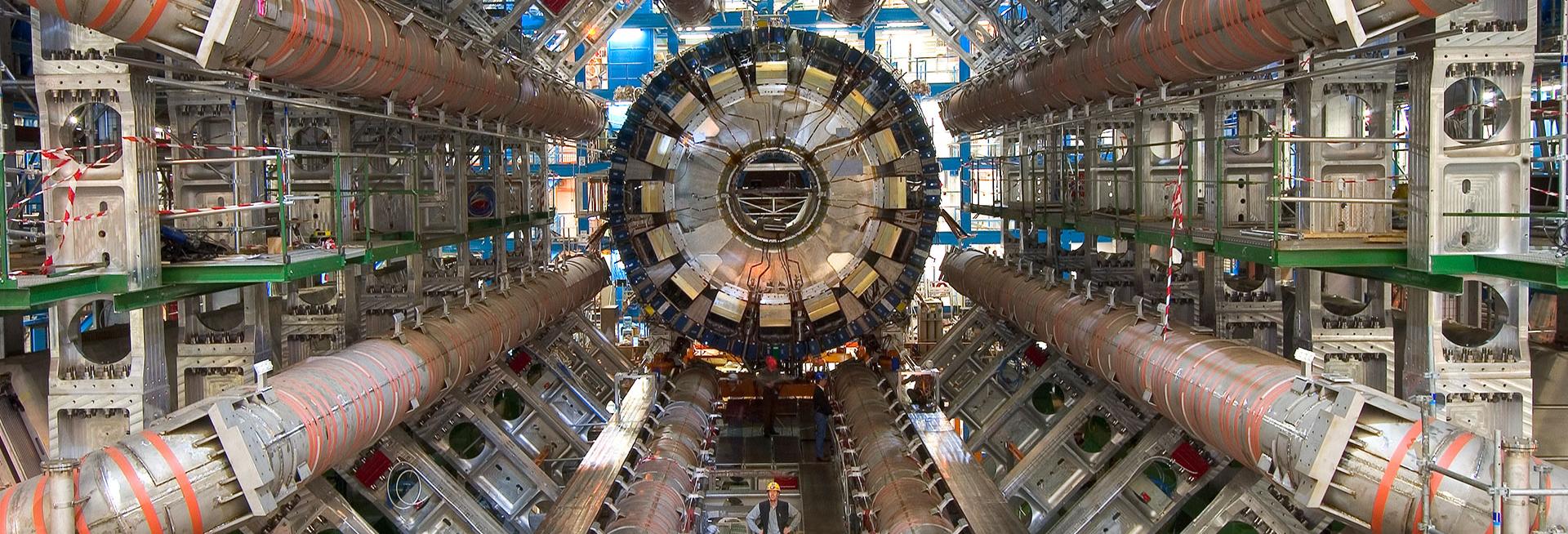
The eight toroid magnets can be seen surrounding the calorimeter that is later moved into the middle of the detector. This calorimeter will measure the energies of particles produced when protons collide in the centre of the detector.
- DPhil in Particle Physics
- Experiments in preparation
- John Adams Institute
- Particle Physics internships
- R&D projects
- Running experiments
A DPhil (PhD) in Particle Physics covers a wide range of topics from the study of new particles produced at high-energy accelerators to neutrinos, dark matter, and dark energy in the Universe and experiments are carried out at facilities around the world.
Oxford’s particle physics experimental group is one of the largest in the world; it includes 28 academics and almost 50 research and technical staff and we support more than 80 postgraduate research students. Our doctoral students have the opportunity to join world-class experimental physics research: our research portfolio includes ATLAS and LHCb at the Large Hadron Collider at CERN; the DUNE long-baseline neutrino experiment, MicroBooNE, and MAGIS-100 and the LZ dark matter direct detection experiment in the USA; T2K, Super-K and Hyper-K in Japan; the Mu3e experiments at PSI; the BES-III experiment in China; the Rubin-LSST programme in Chile, and the AION experiment in Oxford, and the SNO+ neutrino detector in Canada. We play a leading role in exploiting existing facilities, and we have critical roles in the design and development of future experiments. We have superb in-house research facilities, and we host the John Adams Institute for accelerator physics research.
We run an open day for prospective graduate students in December – whether in-person or online – for entry the following year. It is an opportunity to meet supervisors as well as some of our postdocs and current graduate students. We will reimburse reasonable expenses for travel within the UK. Please retain all receipts if you wish to make such an expense claim.
Privacy notice
The information you provide will only be used for this in person/online event. For additional information about our privacy practices, please see here .
Read comprehensive information on fees and funding for graduate students . Please note that in order to be considered for any of the UKRI funding sources, you are required to submit your application before the earlier deadline of Friday 5th January 2024.
How to apply
All applications must be made through the central University of Oxford graduate admissions website where you will find information about applying to any of the six DPhil courses on offer at the Department of Physics.
It is important to note that you are not required to select a final project or supervisor at the point of application; while it is useful for us to know the broad areas you are interested in, we do not expect you to have made a final decision on your preferred projects and there will be opportunities to discuss your interests before offers are made.
If you would like to apply for more than one DPhil course, there is no need to complete a separate application for each or pay more than one application fee; please refer to the instructions for applying to related courses .
- News & Comment
- Our facilities & services
- Current students
- Staff intranet
Browse Course Material
Course info.
- Prof. Markus Klute
Departments
As taught in.
- Nuclear Physics
- Particle Physics
Learning Resource Types
Introduction to nuclear and particle physics, course description.
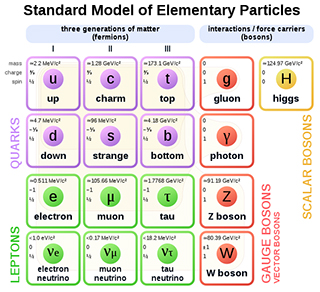
You are leaving MIT OpenCourseWare
Graduate School

General Information
Program offerings:, director of graduate studies:, graduate program administrator:.
Graduate study in the Department of Physics is strongly focused on research leading to the Doctor of Philosophy (Ph.D.) degree. We welcome students from diverse backgrounds and strive to provide a sense of community and inclusiveness where students are enabled to achieve their full potential. The Physics Department maintains an active research program with equal emphasis on theoretical and experimental studies. Primary research areas are theoretical and experimental elementary particle physics, theoretical and experimental gravity and cosmology, experimental nuclear and atomic physics, mathematical physics, theoretical and experimental condensed matter physics, and theoretical and experimental biophysics.
Students are encouraged to involve themselves in research activities right from the beginning. Early research participation leads to a more mature appreciation of the formal aspects of graduate study and a mastery of the skills necessary to succeed in independent work. It also allows a closer association with faculty members and a more natural transition to independent research later on. While research for the doctoral dissertation is the most important component of the program, the Physics Department also offers intensive training on best practices for teaching and scholarly presentation of research results. Together, this comprehensive training is designed to prepare students well for careers in academia and research at government or industrial laboratories, as well a broad range of non-academic careers in the private sector. The average time to completion of the Ph.D. in the Department of Physics is 5.4 years.
Interdepartmental Research Opportunities Physics department faculty and graduate students are active in research collaborations with scientists in several other departments, including astrophysical sciences, plasma physics, chemical and electrical engineering, chemistry, biology, neuroscience, and quantitative and computational biology, as well as the Institute for Advanced Study and the Princeton Institute for the Science and Technology of Materials. With prior approval, students may conduct their research under the supervision of advisers from outside the physics department.
Additional departmental requirements
Applicants must indicate at least one choice from a menu of Department's current Areas of Research – see the Department of Physics website " Research " section for descriptions of the research areas and the current activities in each. The Statement of Purpose is a good opportunity to clarify research interests. The Department of Physics notes that it is not necessary to describe how an applicant developed an interest in Physics. Applicants are typically best served by devoting the statement to a description of their research background and interests. However, applicants with unusual or compelling paths are welcome to describe their experiences. In any case, the Statement of Purpose should focus on an applicant’s specific research interests at Princeton and any relevant research experience.
Program Offerings
Program offering: ph.d..
The Department of Physics divides the core curriculum into three groups. During the first two years, students are required to take and pass (at least) one course in each group. Thus minimally, a student needs to pass three core courses. A passing grade is a B or higher. All students are required to complete the core curriculum by the end of the second year. The core curriculum is grouped into three areas, which are outlined below:
Quantum Mechanics/Quantum Field Theory PHY 506 Quantum Mechanics PHY 509 Relativistic Quantum Theory I PHY 510 Relativistic Quantum Theory II PHY 529 Introduction to High Energy Physics
Condensed Matter/Biophysics/Atomic Physics PHY 525 Introduction to Condensed Matter Physics I PHY 526 Introduction to Condensed Matter Physics II PHY 551 Atomic Physics (not taught every year) PHY 561 & 562 Biophysics
General Relativity/High Energy Physics PHY 523 Introduction to General Relativity PHY 524 Advanced Topics in General Relativity PHY 529 Introduction to High Energy Physics
During the fall term of the first year, students generally take one core course to supplement their undergraduate physics background and prepare for the preliminary exam. Students are encouraged to take other more advanced courses to expand their knowledge in their chosen specialty.
All students are required to take a dedicated course, PHY 502 Communicating Physics that is designed to strengthen the skills necessary to communicate effectively as a teacher and researcher in physics.
Additional pre-generals requirements
Adviser Selection The Department of Physics aims to engage graduate students in research as soon as they arrive. Graduate students are required to settle on a thesis topic and secure a dissertation adviser by the end of the second year.
General exam
The preliminary examination, the experimental project and the required minimum number of core courses constitute the general examination. All sections of the general examination must be completed by the end of the second year.
Students take the first section of the general examination, the preliminary examination, in January or May of the first year. The preliminary examination covers topics of electromagnetism, elementary quantum mechanics, mechanics, statistical physics and thermodynamics.
The second section of the general examination is the experimental project, which consists of a report and presentation on an experiment that the student has either performed or assisted others in performing, at Princeton. Students submit the report and complete the presentation in November of the second year.
Qualifying for the M.A.
The Master of Arts (M.A.) degree is normally an incidental degree on the way to full Ph.D. candidacy and is earned after a student successfully completes all components of the general examination. It may also be awarded to students who, for various reasons, leave the Ph.D. program, provided that these requirements have been met.
While teaching is not a requirement, the Department offers graduate students the opportunity to teach at least one semester during their graduate tenure. A wide range of teaching opportunities are offered, from laboratory work to recitation sessions in core undergraduate and advanced graduate courses.
Post-Generals requirements
The Pre-Thesis Project The pre-thesis project is a research project in the student's area of interest, conducted under the supervision of a faculty adviser who is likely to become the Ph.D. adviser for the student. The final product is a written report and an oral defense in the presence of a pre-thesis committee, which is strongly encouraged to comprise faculty who will also serve as the student’s Ph.D. committee. The report's length and format are typically comparable to a journal article. It is advisable to include an introduction aimed at physicists who are not expert in the field.
The goals of the pre-thesis projects are:
- to give the student a serious introduction to his or her final area of specialization
- to get the student involved with the faculty in the research group of interest
- to get the student known by the faculty in the research group of interest
In order to get a rapid start on their thesis research, students are expected to start actively working on their pre-thesis project as soon as possible. The evaluation by the pre-thesis adviser will be an essential part of the reenrollment process at the end of the third year. The pre-thesis defense should take place no later than the fall of the third year.
Dissertation and FPO
The Ph.D. is awarded once the dissertation is accepted and the final public oral (FPO) has been completed.
- James D. Olsen
Associate Chair
- Waseem S. Bakr
- Simone Giombi
Director of Graduate Studies
Director of undergraduate studies.
- Dmitry Abanin
- Michael Aizenman
- Robert H. Austin
- Bogdan A. Bernevig
- William Bialek
- Curtis G. Callan
- Cristiano Galbiati
- Thomas Gregor
- Frederick D. Haldane
- M. Zahid Hasan
- David A. Huse
- William C. Jones
- Igor R. Klebanov
- Mariangela Lisanti
- Daniel R. Marlow
- Peter D. Meyers
- Nai Phuan Ong
- Lyman A. Page
- Frans Pretorius
- Michael V. Romalis
- Shinsei Ryu
- Joshua W. Shaevitz
- Suzanne T. Staggs
- Paul J. Steinhardt
- Christopher G. Tully
- Herman L. Verlinde
- Ali Yazdani
Associate Professor
- Silviu S. Pufu
Assistant Professor
- Lawrence W. Cheuk
- Andrew M. Leifer
- Isobel R. Ojalvo
Associated Faculty
- Ravindra N. Bhatt, Electrical & Comp Engineering
- Roberto Car, Chemistry
- Mihalis Dafermos, Mathematics
- Andrew A. Houck, Electrical & Comp Engineering
- Mansour Shayegan, Electrical & Comp Engineering
- David N. Spergel, Astrophysical Sciences
- David W. Tank, Princeton Neuroscience Inst
- Jeffrey D. Thompson, Electrical & Comp Engineering
- Salvatore Torquato, Chemistry
- Ned S. Wingreen, Molecular Biology
- Nathalie P. de Leon, Electrical & Comp Engineering
Senior Lecturer
- Grace Bosse
- Katerina Visnjic
- Steven J. Benton
- Vir B. Bulchandani
- Justin G. DeZoort
- Aurelien A. Fraisse
- Norman C. Jarosik
- Katharine Moran
- Matteo Parisi
- Jason L. Puchalla
- Claudio Savarese
Visiting Professor
- Nissan Itzhaki
Visiting Lecturer with Rank of Professor
- Stephen L. Adler
- Nima Arkani-Hamed
- Juan M. Maldacena
- Nathan Seiberg
For a full list of faculty members and fellows please visit the department or program website.
Permanent Courses
Courses listed below are graduate-level courses that have been approved by the program’s faculty as well as the Curriculum Subcommittee of the Faculty Committee on the Graduate School as permanent course offerings. Permanent courses may be offered by the department or program on an ongoing basis, depending on curricular needs, scheduling requirements, and student interest. Not listed below are undergraduate courses and one-time-only graduate courses, which may be found for a specific term through the Registrar’s website. Also not listed are graduate-level independent reading and research courses, which may be approved by the Graduate School for individual students.
CHM 510 - Topics in Physical Chemistry (also PHY 544)
Ece 560 - fundamentals of nanophotonics (also mse 556/phy 565), ece 567 - advanced solid-state electron physics (also phy 567), ece 569 - quantum information and entanglement (also phy 568), mat 595 - topics in mathematical physics (also phy 508), mse 504 - monte carlo and molecular dynamics simulation in statistical physics & materials science (also cbe 520/chm 560/phy 512), phy 502 - communicating physics (half-term), phy 505 - quantum mechanics, phy 506 - advanced quantum mechanics (also mse 576), phy 509 - quantum field theory, phy 510 - advanced quantum field theory, phy 511 - statistical mechanics, phy 521 - introduction to mathematical physics (also mat 597), phy 523 - introduction to relativity, phy 525 - introduction to condensed matter physics, phy 529 - high-energy physics, phy 536 - advanced condensed matter physics ii (also mse 577), phy 537 - nuclear physics, phy 539 - topics in high-energy physics, phy 540 - selected topics in theoretical high-energy physics, phy 557 - electronic methods in experimental physics, phy 558 - electronic methods in experimental physics ii, phy 561 - biophysics, phy 562 - biophysics, phy 563 - physics of the universe, phy 580 - extramural summer research project, phy 581 - graduate research internship, qcb 505 - topics in biophysics and quantitative biology (also phy 555), qcb 515 - method and logic in quantitative biology (also chm 517/eeb 517/mol 515/phy 570).
Particle Physics

Broadly defined, particle physics aims to answer the fundamental questions of the nature of mass, energy, and matter, and their relations to the cosmological history of the Universe.
As the recent discoveries of the Higgs Boson, neutrino oscillations, as well as direct evidence of cosmic inflation have shown, there is great excitement and anticipation about the next round of compelling questions about the origin of particle masses, the nature of dark matter, and the role leptons, and in particular neutrinos, may play in the matter-antimatter asymmetry of the Universe.
The energy scales relevant for these questions range from the TeV to perhaps the Planck scale. Experimental exploration of these questions requires advances in accelerator and detector technologies to unprecedented energy reach as well as sensitivity and precision. New facilities coming online in the next decade promise to open new horizons and revolutionize our view of the particle world.
Particle theory addresses a host of fundamental questions about particles, symmetries and spacetime. As experiments at the Large Hadron Collider (LHC) directly probe the TeV energy scale, questions about the origin of the weak scale and of particle masses become paramount. Is this physics related to new strong forces of nature, to new underlying symmetries that relate particles of different spin, or to additional spatial dimensions that have so far remained hidden? Will this physics include the particles that constitute the dark matter of the universe, and will measurements at the LHC allow a prediction of the observed cosmological abundance? String theory remains the leading candidate for a quantum theory of gravity, but a crucial debate has emerged as to whether its predictions are unique, or whether our universe is part of a multiverse. All of these fundamental questions about particles and spacetime lead to corresponding questions about the early history of the universe at ever higher temperatures. The most compelling links between cosmological observations and fundamental theory involve dark matter, inflation, the cosmological baryon excess and dark energy.
Mina Aganagic
Korkut bardakci, raphael bousso, william frazer, mary k. gaillard, lawrence hall, wick haxton, petr horava, hitoshi murayama, yasunori nomura, geoff penington, benjamin safdi, charles schwartz, mahiko suzuki, raúl briceño, luca victor iliesiu, experimentalists, dmitry budker, gabriel orebi gann, heather gray, barbara jacak, bob jacobsen, yury kolomensky, kam-biu luk, daniel mckinsey, marjorie shapiro, james siegrist, herbert steiner, haichen wang, michael s. witherell, chiara salemi.

- How to find us
- Image Gallery
- Equity, Diversity and Inclusivity
- DIVA Program
- Associateships
- Senior Fellowships
- Academic Staff
- Research Staff
- Postgraduates
- Steering Committee
- Institute Research
- Postgraduate Research Opportunities
- UK Seminars
- UK Conferences
- UK Newsletters
- Workshop Archive
- Seminar Archive
Open Research Opportunities for 2025 onward
The PhD supervisors and projects for fully funded studentships beginning in October 2025 will be listed here in due course.
See here for information on how to apply. Please indicate interest in physics in the application materials if the projects listed in this section are your main interest. We also consider applications to the particle theory division of the Mathematics department, under the rubric of the Centre for Particle Theory.
Ongoing Postgraduate Research in the 2024 Cohort
Neutrino physics.
The PGR Student has been selected and will join the IPPP in October 2024.
Supervisor: Jessica Turner
Precision calculations for present and future colliders
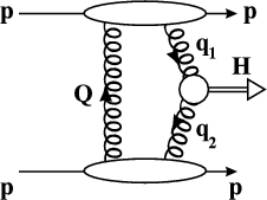
After the successful completion of Run I and II of the Large Hadron Collider (LHC) the much anticipated discovery of signals of beyond-the-Standard-Model physics is still lacking. Precision tests scrutinising the Standard Model are of prime importance in its physics programme, now and in the foreseeable future. At the same time new physics searches are looking for increasingly small signals demanding more precise estimates of the Standard Model backgrounds. Run III, having commenced recently, and the High-Luminosity upgrade thereafter, will further increase the available luminosity, enlarging the statistical prowess of the recorded data in most physics regions of interest. This expansion of sensitivity in both precision measurements and new physics searches in the multi-TeV region necessitates an immense improvement of the accuracy of theoretical predictions. Further, strongly interacting new physics signals have been largely excluded by now, putting an emphasis on weakly interacting models and their electroweak Standard Model backgrounds. This is not only true for ongoing precision LHC measurements, but all the more so for all proposed future e+e− colliders. Lacking the vast energy range of a hadron collider they focus, in one form or another, on measurements with unprecedented precision to probe the Standard Model and, possibly, expose any deviations from its predictions. The research performed in this PhD aims to provide precision calculations for relevant processes and observables at the LHC and future colliders that are necessary to contrast and test the predictions of our current best theory, the Standard Model, against the expected high-precision experimental data. In consequence, contribution from new physics not contained in the Standard Model to such processes and observables can be analysed and interpreted either as discoveries or more and more stringent exclusion limits.
Supervisor: Marek Schoenherr
Theories to enable searches for new physics with high energy and high precision experiments
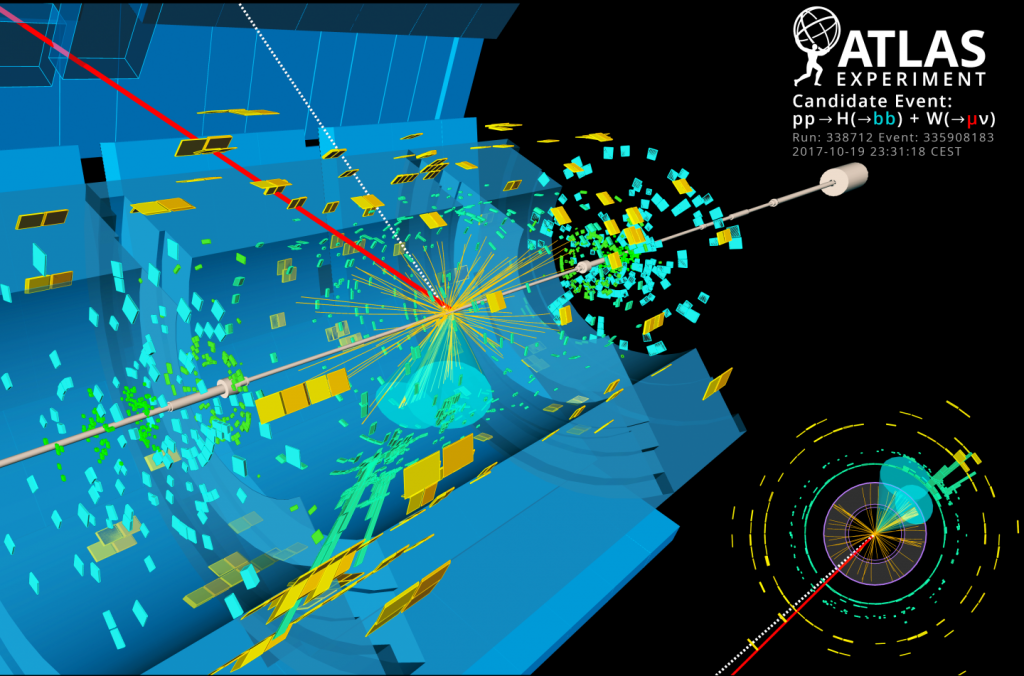
The research performed in this PhD position seeks to deepen our understanding of the fundamental theories that describe our universe. Theories addressing the open problems not explained within the Standard Model of particle physics, for example the question what constitutes dark matter, how neutrinos obtain their masses, or whether new physics can explain the difference between the matter and antimatter we observe in the Universe, or how we can observe the cosmic neutrino background, have direct and indirect effects. In parallel novel experimental technologies have changed the way we can discover new physics significantly. We now have high-statistics available to probe the properties of the Higgs boson, gravitational wave detectors have enabled to search for completely new signals, and quantum sensors have made enormous progress in the last decade. The goal of this research is to consistently describe theories of new physics taking into account all effects dictated by the mathematical consistency and the symmetries of the theory, to explore the implications of this description and to advise novel ways top observe these direct and indirect effects. Special focus will be on fully exploiting the experimental advances both in high-energy physics and high-precision physics. Familiarity with both quantum field theory calculations and scientific software are beneficial for this project.
Supervisor: Martin Bauer
Unveiling the Neutrino Mysteries: From Particle Physics to Astrophysics
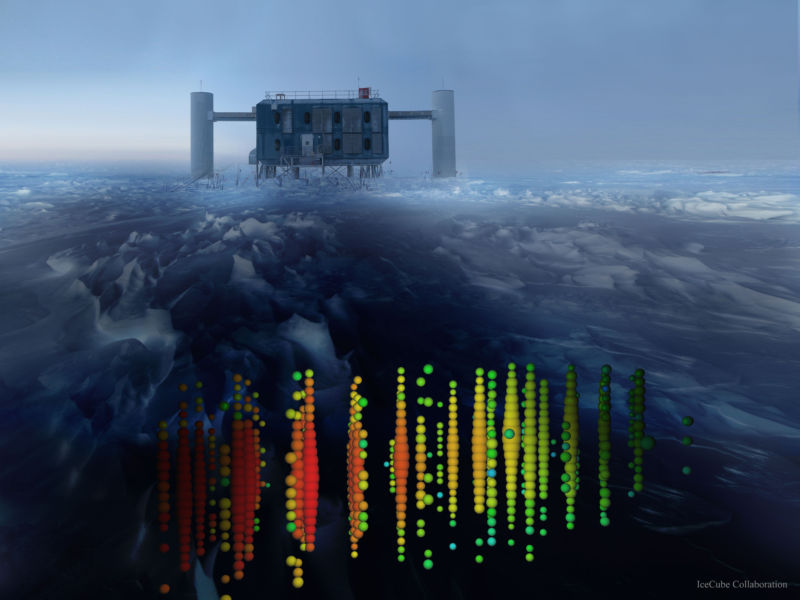
As part of the project, we will explore neutrino properties in light of the newly discovered sources by the IceCube (pictured above) and KM3net experiments. We will also investigate the 3-neutrino paradigm through upcoming measurements by the Dune, Juno, and HyperK experiments.
PGR student: Joseph Tudor (starts October 2024)
Supervisor: Ivan Martinez-Soler
Phenomenology at Particle Colliders and Simulations
High-energy collisions at particle accelerators continue to provide us with the best and most varied data and insights concerning the fundamental constituents of matter and the rules according to which they interact. After the discovery of the Higgs boson a decade ago, the current flag-ship experiments at the CERN LHC are entering a phase where their ever increasing precision is cornering and excluding ideas for extensions of the Standard Model. At the same time, the particle community is discussing the experiments after the LHC era, with a wide array of options and a broad range of physics opportunities.
For all these facilities at current and future particle colliders simulations bridge the gap between theoretical concepts and experimental data, turning the former into calculations and results that can be directly compared with the latter. Consequently, simulation tools such as SHERPA event generator are a unique and non-dispensable part of all phenomenological efforts to shed light on the behaviour of matter at its most fundamental level.
Frank’s PhD project will center around extending the capabilities of SHERPA with the latest theoretical results and methods and using the event generator to propose new measurements to the experimental community.
Supervisor: Frank Krauss
Shedding light on dark matter with new phenomenological tools and astrophysical data
H The particle nature of dark matter, constituting greater than 80% of the matter content of the Universe, continues to elude us. Recent breakthroughs in astronomy may hold the potential to unravel this mystery, as they allow access to previously concealed regimes of the cosmos.
In particular, wo novel types of astrophysical data may lead to a breakthrough in our understanding of dark matter. Firstly, there is the advent of gravitational wave (GW) astronomy, marked by the detection of a binary black hole merger by the LIGO/Virgo collaboration in 2015. In 2023, pulsar timing arrays also reported a signal consistent with nanoHz gravitational waves. Future observation runs and future GW experiments will advance significantly in frequency range and sensitivity, opening up new directions for phenomenological studies of particle physics. Secondly, infrared (IR) astronomy is poised to revolutionise our understanding of the cosmos. With the launch of next-generation space telescopes including JWST and the Nancy Grace Roman Space Telescope (RST), and the refinement of ground-based observatories, we will be able to probe deeper into the universe than ever before, capturing images and spectra of celestial objects that remain elusive in other wavelengths.
In this PhD project you will work on phenomenology of dark matter through the interpretation of astrophysical data, paving the way to answer fundamental questions about the nature of dark matter. You will work with a sophisticated arsenal of tools, which will likely include stellar evolution simulations and various data analysis and machine learning techniques, and collaborate with experts across different fields.
Supervisor: Djuna Croon
© Copyright 1999 IPPP, Durham University
Graduate Program
Excellence in graduate education.
Our department’s faculty and students are published and featured in numerous publications, hold high-level positions at major experiments around the world, and over half are Fellows of the American Physical Society.
Our research specialties include experimental particle physics, particle astrophysics, theoretical particle physics and cosmology, molecular biophysics, experimental biophysics, experimental condensed matter physics, theoretical quantum condensed matter physics, statistical physics, polymer physics and computational physics. There are numerous interdisciplinary opportunities, particularly with the School of Engineering and the Center for Photonics Research. Major resources include the Scientific Instrument Facility, the Electronics Design Facility, and the supercomputer clusters in the Center for Computational Science.
We have over 70 graduate students, with a typical incoming class of 10 to 20 students. The department provides full tuition scholarships, stipends, and student medical insurance for essentially all graduate students through a combination of teaching fellowships, research assistantships, and university fellowships.
The Physics Department is centrally located on Boston University’s main Charles River Campus. Boston is a major metropolitan center of cultural, scholarly, scientific and technological activity. There are many major academic institutions in the area, providing students an array of opportunities with which to supplement their education at BU.
PhD in Physics
Program requirements and policies.
- Graduate TA should register on SIS for PHY 405; Graduate RA should register on SIS for PHY 406 .
- Students who are working on a thesis or dissertation project for their doctoral degree should also register for PHY 502 FT (Doctoral Degree Continuation) in each semester.
I. Proficiency in four core fields
- Classical mechanics
- Classical electromagnetism
- Statistical mechanics
- Quantum mechanics
Students can demonstrate proficiency through:
- PHY 131: Advanced Classical Mechanics
- PHY 145: Classical Electromagnetic Theory I
- PHY 146: Classical Electromagnetic Theory II
- PHY 153: Statistical Mechanics
- PHY 163: Quantum Theory I
- PHY 164: Quantum Theory II
- A final grade of A- or better in PHY 131: Advanced Classical Mechanics meets the proficiency requirement for classical mechanics.
- An average combined final grade of A- or better in PHY 145: Classical Electromagnetic Theory I and PHY 146: Classical Electromagnetic Theory II meets the proficiency requirement for classical electromagnetism.
- A final grade of A- or better in PHY 153: Statistical Mechanics meets the proficiency requirement for statistical mechanics.
- An average combined final grade of A- or better in PHY 163: Quantum Theory I and PHY 146: Quantum Theory II meets the proficiency requirement for quantum mechanics.
- Passing a written qualifying exam in the subject(s).
Assessment policy for proficiency in the core courses for first year students
II. At least one course from any two of the following specialized fields
- AST 121: Galactic Astronomy
- AST 122: Extragalactic Astronomy
- Any graduate level courses, including Special Topics courses, in Astronomy/Astrophysics
- PHY 173: Solid State Physics I
- PHY 174: Solid State Physics II
- Any graduate level courses, including Special Topics courses, in Condensed Matter Physics
- PHY 183: Particle Physics I
- PHY 184: Particle Physics II
- Any graduate level courses, including Special Topics courses, in Particle Physics
- PHY 167: General Relativity
- PHY 268: Cosmology
- Any graduate level courses, including Special Topics courses, in General Relativity and Cosmology
- PHY 263: Advanced Quantum Mechanics
- Any graduate level courses, including Special Topics courses, in Quantum Mechanics or Quantum Information
III. Oral qualifying examination
By the end of the third year, the student must complete an oral qualifying examination in his/her chosen specialized field. The purpose of the oral qualifying examination is threefold:
- to provide the student with an opportunity to apply his/her fundamental knowledge of physics to a specific topic in his/her field of interest;
- to evaluate the student's ability to carry that skill forward into his/her dissertation research, and
- to provide practice in the presentation of scientific material.
The topic should be selected by the student in consultation with his/her research advisor, in order best to advance that student's progress. It could be a review of research relevant to the student's intended research project, a proposal for a possible research topic, or another topic in the general area of the student's research, but not directly related to that research. It should be sufficiently well defined that the student can achieve substantial mastery and depth of understanding in a period of 4-6 weeks. In general, depth is more important than breadth.
The student shall prepare and deliver a public presentation of 30-45 minutes duration, with the expectation that during that period the audience and guidance committee will freely ask questions. The form of the presentation will be determined by the student's advisor and guidance committee, but regardless of the format, the student must be prepared to depart from the prepared material to answer questions.
Following the presentation and an open question period, the audience will be asked to leave, and the student's guidance committee will pose additional questions. While some questions will be directly related to the topic of the presentation, others will probe fundamental physics underlying or related to the topic. The student's ability to respond appropriately, exhibiting both understanding of the relevant physics and the ability to apply it to the topic at hand, is at least as important as the prepared presentation.
While the primary function of the examination is educational rather than evaluative, if the guidance committee does not find the student's performance to be satisfactory, it may:
- Fail the student, resulting in his/her administrative withdrawal from the doctoral program;
- Require the student to submit to another oral examination covering the same or different material;
- Require other remedial work, which may include preparing and presenting a written or oral explanation of some topic, or such other steps as the committee deems appropriate.
In cases (2) and (3), the requirement must be completed successfully within two months after the original examination, but no later than the beginning of the student's fourth year. In no case will the student receive a third opportunity to fulfill the requirement.
IV. Independent research
After satisfactory performance on the oral qualifying exam, the candidate undertakes a program of independent research under the guidance of their research advisor, culminating in the preparation and defense of a doctoral dissertation. Students must register for one credit of PHY 0297: Graduate Research and one credit of PHY 0298: Graduate Research in their final two semesters of the program.

Alternatively, use our A–Z index
Attend an open day
Discover more about postgraduate research
PhD Particle Physics / Programme details
Year of entry: 2024
- View full page

Programme description
The Department has a strong presence in a number of Manchester-based centres for multidisciplinary research: The National Graphene Institute, the Photon Science Institute, the Manchester Centre for Non-Linear Dynamics, and the Dalton Nuclear Institute. In addition, the Jodrell Bank Observatory in Cheshire is a part of the department.
The Manchester Particle Physics group performs theoretical and experimental research into the fundamental constituents of matter and the interactions that govern them. The group includes over 50 academic, research, and technical staff and over 50 postgraduate research students, making it one of the largest groups in the country.
Opportunities exist for prospective postgraduates to directly contribute to the world-class experimental and theoretical particle physics research conducted by our group members, including projects that span experiment and theory. Our theoretical research spans the development of models of Beyond the Standard Model physics and their testing at existing and future experimental facilities, connections to the study of particle cosmology and the early Universe, and research into high-precision quantum chromodynamics calculations and Monte Carlo modelling.
Our experimental research spans the LHCb, ATLAS and FASER experiments at the Large Hadron Collider at CERN, the DUNE experiment and short-baseline neutrino experiment programme at Fermilab in the USA, the NEXT experiment in Spain, the Mu2e and g-2 experiments at Fermilab, the SuperNEMO experiment on the French/Italian border, the BES-III experiment in China, and the Darkside-50/20k dark matter direct detection experiments in Italy.
The group holds leadership responsibilities in 14 international experiments, and hosts the spokesperson of one major international collaboration. As well as playing a leading role in the exploitation of existing facilities, the group has key roles in the design and development of future experiments including FCC, Liquid Argon TPC detector development, particle tracking detector upgrades for the LHCb and ATLAS experiments, and 3D diamond detector technologies.
The group has strong links with national and international facilities, a very well-equipped laboratory space and state-of-the-art clean rooms, and hosts one of the largest and most successful Tier-2 distributed computing centres in the UK. We have a local computing cluster with networked storage and GPUs.
For more information about research themes within the department please visit our themes page or view available projects within the department on our Postgraduate Research projects page .
Additional programme information
Equality, diversity and inclusion is fundamental to the success of The University of Manchester, and is at the heart of all of our activities.
We know that diversity strengthens our research community, leading to enhanced research creativity, productivity and quality, and societal and economic impact.
We actively encourage applicants from diverse career paths and backgrounds and from all sections of the community, regardless of age, disability, ethnicity, gender, gender expression, sexual orientation and transgender status.
We also support applications from those returning from a career break or other roles.
We consider offering flexible study arrangements (including part-time: 50%, 60% or 80%, depending on the project/funder), carer support funds for conferences, and peer support networks for parents and carers.
All appointments are made on merit. The University of Manchester and our external partners are fully committed to equality, diversity and inclusion.
Related research
Related research in the Department is conducted through the following research groupings:
Nuclear Physics.
Particle Accelerator Physics.
Theoretical Physics.
For more information on the above research groupings please visit www.physics.manchester.ac.uk
Scholarships and bursaries
In the Department of Physics and Astronomy we offer a range of scholarships, studentships and awards to support UK and overseas postgraduate researchers.
Funding is also available at university and faculty level and can be viewed on our funding page . Alternatively, you can use our funding database to find scholarships, studentships and awards you may be eligible for.
We'd recommend you discuss potential sources of funding with your supervisor before applying. They can advise what funding may be available to you, and ensure you meet nomination and application deadlines.
Disability support
| We have a PhD position available for a home (UK) student to work on the ATLAS experiment, starting in the 2023-24 academic year. Please contact Dr Miriam Watson by email if you are interested in applying. --> Each year we have several research-council funded places, and a limited number of University Scholarships for home students (UK nationals and EU nationals with (pre-)settled status). International students are welcome to apply. Please make contact to investigate alternative funding possibilities. Please see information below, and instructions on how to apply. For more information please contact the PhD admission tutor:
Experimental High Energy Physics in BirminghamThere could hardly be a better time than the present to begin a PhD in Experimental Particle Physics at the School of Physics and Astronomy, University of Birmingham! We play central roles in cutting-edge experiments, present and future, addressing a broad range of issues in modern particle physics. We are heavily involved in data analysis at the ATLAS experiment, and members of the group have played major roles in the discovery of the new particle consistent with the Higgs boson. Besides, our ATLAS group works on heavy quarks physics (beauty and top). Our LHCb group studies rare decays of particles containing the beauty quark, and the search for new physics beyond the Standard Model. We also study CP violation and matter-antimatter asymmetry at LHCb. Beside LHC experiments, we are searching for new physics in very rare strange particle decays and for processes that violate Lepton Flavour Universality through our work on the CERN fixed target NA62 experiment. DUNE experiment that plans to study neutrino oscillations. --> The group also has growing activities on novel detectors for light dark matter searches at the NEWS-G experiment and elsewhere. Looking at a more distant future, we are heavily involved in LHC upgrades and in work towards future electron-proton, electron-ion colliders (LHeC, EIC), electron-positron colliders (ILC, CLIC, FCC-ee), and proton-proton colliders (FCC-hh). The group also has a strong R&D programme on silicon detectors for the LHC Upgrade and beyond, and for Medical Physics applications. We accept excellent students to work for a PhD on all our research projects. Doing a PhD in Experimental Particle Physics at Birmingham UniversityWe have a large particle physics group , with currently around 40 academic and support staff members and 25 PhD students, and extensive local facilities . The particle physics group is housed in recently renovated offices with excellent computing facilities, near to the centre of the University campus. Students work closely with their supervisors, but also with other academic and research staff, participating fully in the life of the group. In addition to the research work on their selected experiment, students spend part of their first year on a taught graduate course, including lectures on particle physics theory and experimentation. The course culminates in the Rutherford Laboratory Summer School on Particle Physics held at the end of the first year. As part of their training, students also usually attend a CERN or other major international Summer School relevant to their research at the end of their second year. The remainder of the course is focussed full-time on research. This usually involves a mixture of detector development or operation and analysis of experimental data, the exact mix depending on the experiment and the student's interests. Students usually spend significant time on site at their experiment, for example at CERN (Geneva), working closely with our international colleagues. This may be in the form of a long-term attachment of perhaps a year, or else several short visits, depending on the project and the student. The extensive analytical, scientific, computing, presentational and team-working skills obtained by particle physics PhD students provides a solid foundation for post-doctoral employment, either in research, industry, or business.
| ||||||||||||||||||







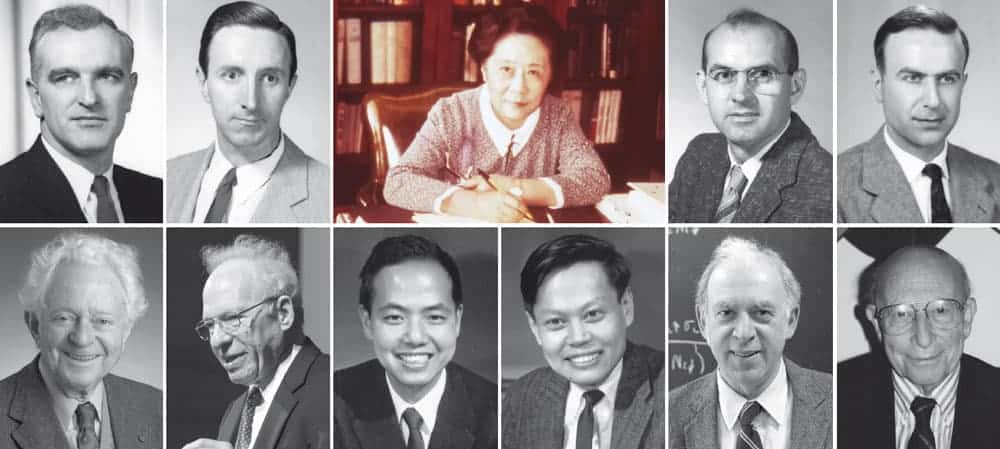



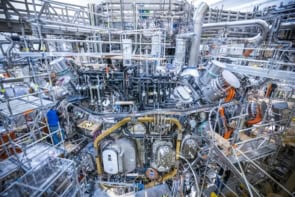
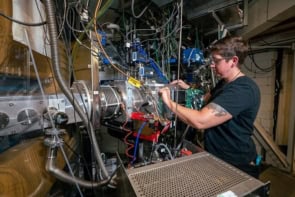



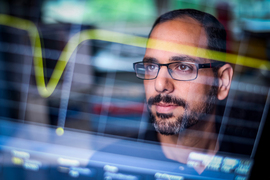
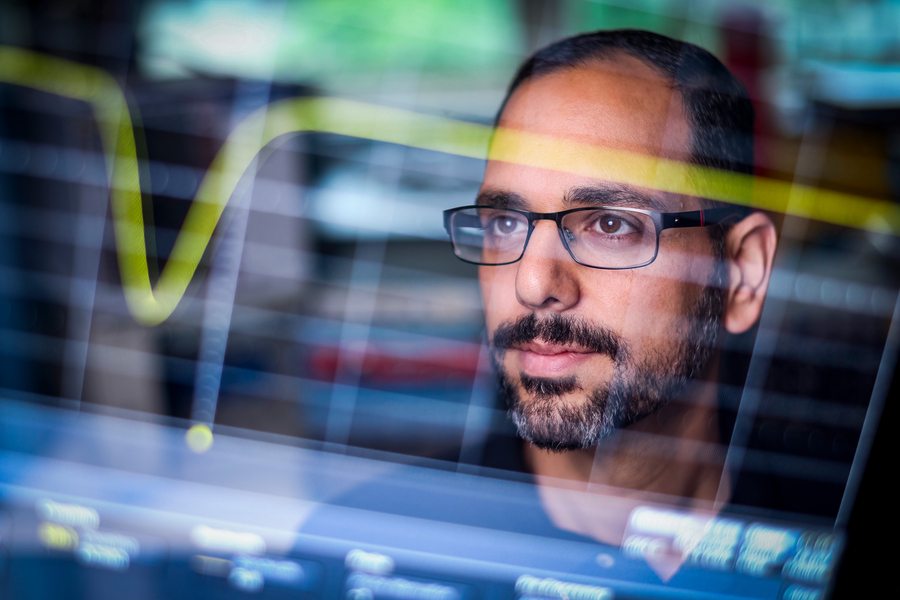
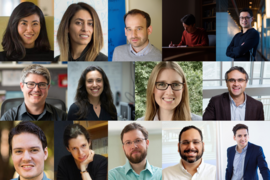

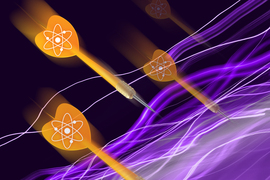
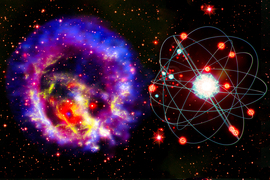


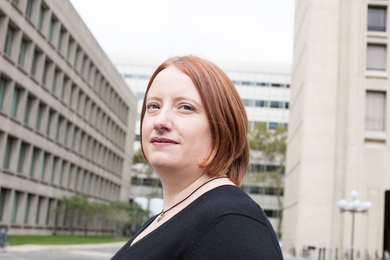
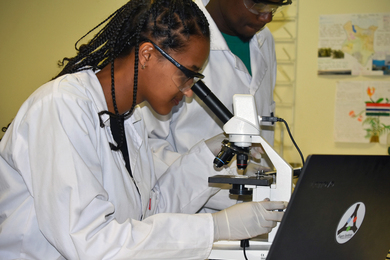
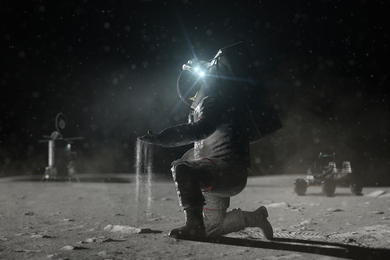

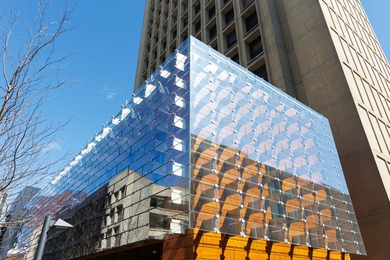
COMMENTS
Scholarships and funding. This article was published on 8 Jan, 2024. Study PhD in Particle Physics at the University of Edinburgh. Our postgraduate degree programme research explores developments in both perturbative and non-perturbative field theory, renormalization theory and the application of quantum theory to other branches of physics.
Graduate destinations. The particle physics doctoral programme at Oxford is ideally suited to students who would like to pursue a career in research, either in academia or industry all over the world. Students have taken on a wide variety of jobs in other fields, including investment banking, business analysis, and consulting. ...
The Manchester Particle Physics group performs theoretical and experimental research into the fundamental constituents of matter and the interactions that govern them. The group includes over 50 academic, research, and technical staff and over 50 postgraduate research students, making it one of the largest groups in the country.
A DPhil (PhD) in Particle Physics covers a wide range of topics from the study of new particles produced at high-energy accelerators to neutrinos, dark matter, and dark energy in the Universe and experiments are carried out at facilities around the world. Oxford's particle physics experimental group is one of the largest in the world; it ...
Santa Barbara, CA. #9 in Physics (tie) Save. 4.5. Graduate schools for physics typically offer a range of specialty programs, from quantum physics to relativity, as well as plentiful research ...
This is an introductory graduate-level course on the phenomenology and experimental foundations of nuclear and particle physics, including the fundamental forces and particles, as well as composites. Emphasis is on the experimental establishment of the leading models, and the theoretical tools and experimental apparatus used to establish them.
Expected Progress of Physics Graduate Student to Ph.D. This document describes the Physics Department's expectations for the progress of a typical graduate student from admission to award of a PhD. Because students enter the program with different training and backgrounds and because thesis research by its very nature is unpredictable, the time-frame for individual students
Graduate study in the Department of Physics is strongly focused on research leading to the Doctor of Philosophy (Ph.D.) degree. ... Primary research areas are theoretical and experimental elementary particle physics, theoretical and experimental gravity and cosmology, experimental nuclear and atomic physics, mathematical physics, theoretical ...
Particle Physics. Broadly defined, particle physics aims to answer the fundamental questions of the nature of mass, energy, and matter, and their relations to the cosmological history of the Universe. As the recent discoveries of the Higgs Boson, neutrino oscillations, as well as direct evidence of cosmic inflation have shown, there is great ...
The research performed in this PhD position seeks to deepen our understanding of the fundamental theories that describe our universe. Theories addressing the open problems not explained within the Standard Model of particle physics, for example the question what constitutes dark matter, how neutrinos obtain their masses, or whether new physics can explain the difference between the matter and ...
The department provides full tuition scholarships, stipends, and student medical insurance for essentially all graduate students through a combination of teaching fellowships, research assistantships, and university fellowships. The Physics Department is centrally located on Boston University's main Charles River Campus. Boston is a major ...
I. Proficiency in four core fields. Students can demonstrate proficiency through: A final grade of A- or better in PHY 131: Advanced Classical Mechanics meets the proficiency requirement for classical mechanics. An average combined final grade of A- or better in PHY 145: Classical Electromagnetic Theory I and PHY 146: Classical Electromagnetic ...
A PhD in Particle Physics opens up a wide range of exciting career opportunities. Many graduates go on to work in academia, conducting further research and teaching at universities. Others find employment in research institutions, national laboratories, or government agencies, contributing to groundbreaking discoveries and technological ...
The Manchester Particle Physics group performs theoretical and experimental research into the fundamental constituents of matter and the interactions that govern them. The group includes over 50 academic, research, and technical staff and over 50 postgraduate research students, making it one of the largest groups in the country.
Doing a PhD in Experimental Particle Physics at Birmingham University We have a large particle physics group, with currently around 40 academic and support staff members and 25 PhD students, and extensive local facilities. The particle physics group is housed in recently renovated offices with excellent computing facilities, near to the centre ...
The PhD in Physics is a full-time period of research which introduces or builds upon, research skills and specialist knowledge. Students are assigned a research supervisor, a specialist in part or all of the student's chosen research field, and join a research group which might vary in size between a handful to many tens of individuals.
The academic subjects of the Doctoral Programme in Particle Physics and Universe Sciences (PAPU) include theoretical physics, astronomy and physics (specialization lines of space physics and particle and nuclear physics). PAPU covers theoretical, experimental and observational research fields in elementary particle physics, cosmology, astrophysics, space physics and planetary astrophysics.
About Particle Physics Theory. The research group in Particle Physics Theory at the University of Edinburgh is one of the largest in the UK. We have a large group of PhD students from around the world: recent examples include students from Ireland, Germany, Italy, the United States, as well as the UK. We are always interested in good students ...
Experimental. The experimental High Energy Physics group is active in a range of experiments studying the fundamental constituents of matter. The work includes accelerator-based experiments, studies using nuclear reactors, and the detection of new particles from astrophysical sources. This research takes place within the Enrico Fermi Institute ...
The Elementary Particle Physics (EPP) group at the University of Warwick have an immediate opportunity for a Ph.D. student to join its programme of quark-flavour physics with the LHCb experiment. Read more. Supervisor: Prof T Gershon. Year round applications PhD Research Project Funded PhD Project (UK Students Only)
Obtain a Bachelor's Degree: To become a particle physicist, you will need a strong foundation in physics, mathematics, and computer science. Start by pursuing a Bachelor's Degree in Physics, Mathematics, Engineering, or a related field. You should aim for a GPA of at least 3.0, as competition for graduate programs can be intense.
Particle Physics PhD Positions. Applications for Particle Physics PhD projects within our group are open all-year round, however funded PhD projects normally start in October with the applications being reviewed and invitations sent out for interviews in January-March. Off. The STFC/UKRI funding body which provides the funding for most Particle ...
Second, physics PhDs are still valued. However, "peak" physics PhD was about 5 years ago, when anyone who wanted data science and didn't know what to do was just hoovering up physics PhDs. Today, the interview process is relatively more mature meaning you will need to succeed at actual technical interviews.
Particle pioneer: Tsung-Dao Lee paved the way to our understanding that parity is violated in the weak force (courtesy: CERN) The Chinese-American particle physicist Tsung-Dao Lee died on 4 August at the age of 97. Lee shared half of the 1957 Nobel Prize for Physics with Chen Ning Yang for their theoretical work that overturned the notion that parity is conserved in the weak force - one of ...
particle physics is that it does not only describe all elementary particles ... the groundwork for Ming's PhD project. At the time of the study, Lei Ming was a visiting PhD student at
Their paper, published in Physical Review Letters, suggests that this measurement could help to explore the connection between cosmic inflation and particle physics. "One of the most astonishing ...
Lee, whose work advanced the understanding of particle physics, was one of the great masters in the field, according to a joint obituary released Monday by the Tsung-Dao Lee Institute at Shanghai ...
This has not been realized before," says Xinchao Zhou, graduate student at Purdue Physics and Astronomy. ... biophysics, condensed matter physics, quantum information science, and particle and nuclear physics. Our state-of-the-art facilities are in the Physics Building, but our researchers also engage in interdisciplinary work at Discovery ...
Tsung-Dao Lee in 2006. He was a young professor at Columbia University when he shared the 1957 Nobel Prize in Physics. Credit... Visual China Group, via Getty Images
Helping to build the neutron detector was a gratifying combination of hands-on work and abstract thinking, and from then on, Hen was hooked on experimental nuclear physics. After completing his PhD, and a thesis on short-range correlations, Hen headed to MIT, where he interviewed for a postdoc position as a Pappalardo Fellow in the Laboratory ...